Nannoceratopsis gracilis
Nannoceratopsis gracilis is a fossil dinoflagellate cyst from the Jurassic period (200 to 145 million years ago).
Dinoflagellates are microscopic single-celled algae. They are a key part of marine and non-marine phytoplankton in modern and ancient ecosystems. Since they photosynthesise, they are primary producers at the base of the food chain and play a major role in the CO2 cycle.
As part of their life cycle, they form very resistant organic-walled cysts. These are very well preserved in sedimentary rocks and are studied by micropalaeontologists.
Species detail
Nannoceratopsis belongs to one of the oldest groups of dinoflagellates that we know from the fossil record, which makes it important in the study of early dinoflagellate evolution.
This species is an excellent Jurassic dinoflagellate cyst example. It has a quite unusual but distinctive morphology that makes it easy to recognise. In fact Nannoceratopsis looks so different to other dinoflagellate cysts that an order has been created especially to incorporate its forms.
-

Morphology
Discover the key morphological characteristics used to identify Nannoceratopsis and view a labelled body plan of the species.
-

Evolution
Learn why Nannoceratopsis is regarded as an unusual dinoflagellate cyst, and why its order has been suggested as the ancestor of modern Dinophysiales dinoflagellates.
-

Palaeoenvironment
Find out about the wide range of environments that Nannoceratopsis is known from.
-

Stratigraphic distribution
Find out about the stratigraphic distribution of Nannoceratopsis gracilis and its genus.
-

References
Get reference material related to Nannoceratopsis.
Images

The fossil dinoflagellate cyst Nannoceratopsis gracilis has a very distinctive shape, as shown by these right and left side views.

Right lateral view of Nannoceratopsis gracilis, showing the tabulation details of the sulcus.

Body plan of Nannoceratopsis.
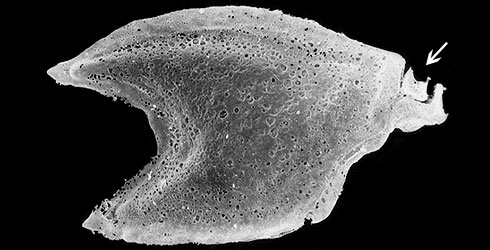
Scanning electron microscope image of the left lateral view of Nannoceratopsis. The arrow indicates the excystment opening (archaeopyle) within the cingulum.
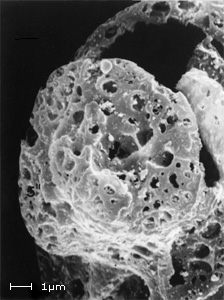
Scanning electron microscope image of the epicyst of Nannoceratopsis, showing minute plates arranged in a peridinialean pattern.
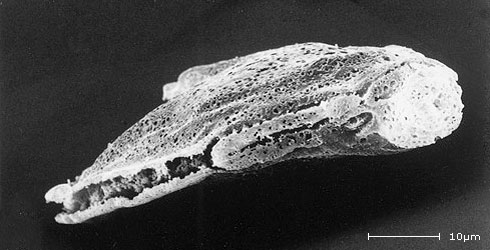
Scanning electron microscope image of the ventral face of Nannoceratopsis.
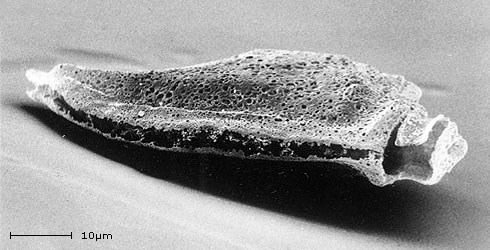
Scanning electron microscope image of the dorsal view of Nannoceratopsis.
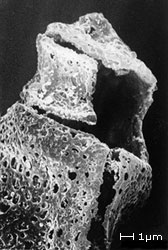
Cingular archaeopyle in Nannoceratopsis.
About the author
Susanne Feist-Burkhardt
Former researcher in the Palaeontology Department.
